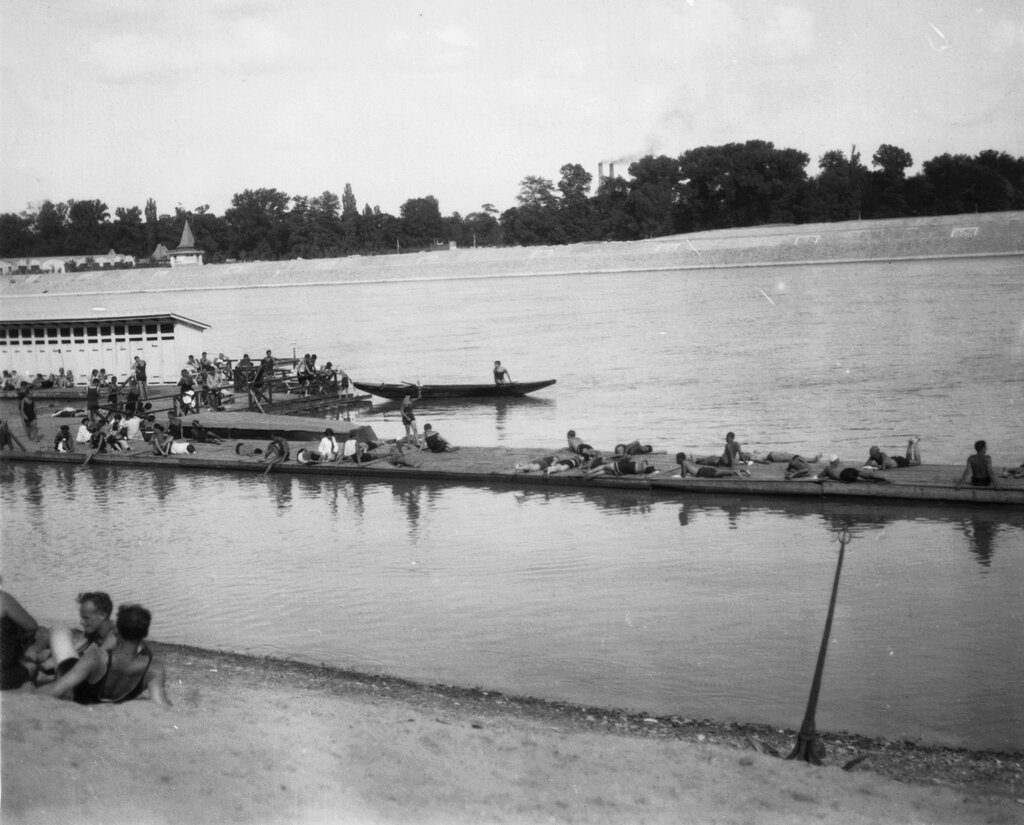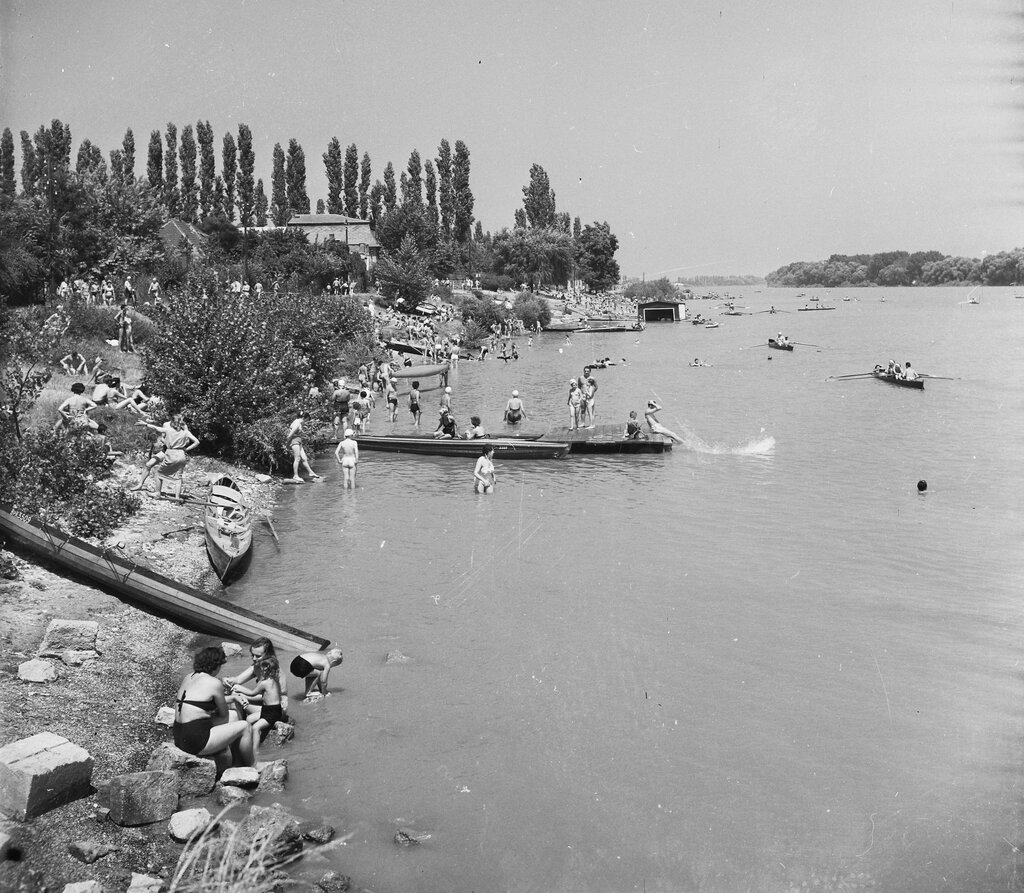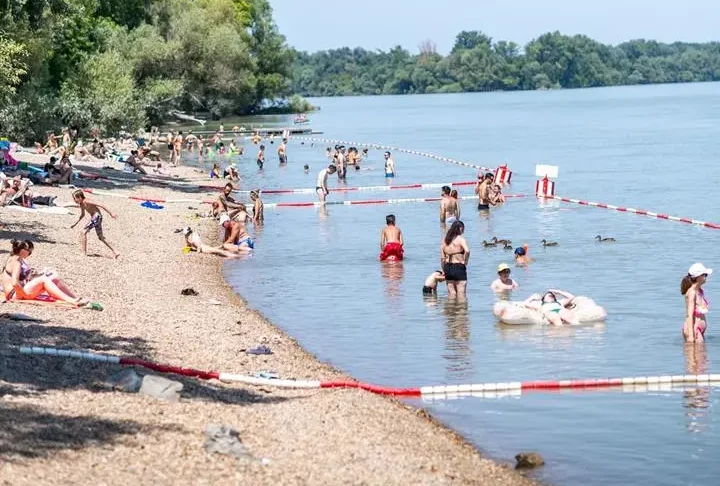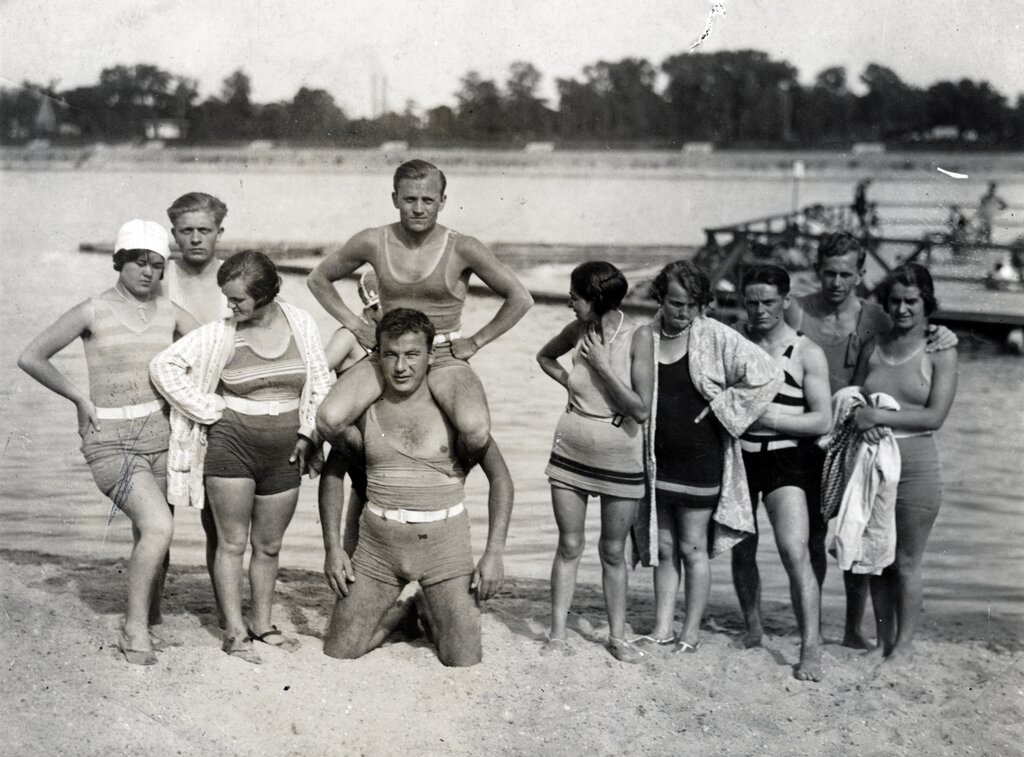Danube beaches could be opened at any time to replace docked boats – So why aren’t they?

Until the mid-20th century, residents of Budapest enjoyed several open-water beaches on the Danube. Today, only two remain, despite the water quality being sufficient for more. Where did people swim in the past, where might they swim in the future, and what lessons can Budapest learn from the Paris Olympics?
New beaches on the Danube could open tomorrow, given that the water quality is so favourable, writes Válasz Online in a recent article, summarising what the Hungarian capital could learn from the urban planning surrounding the Paris Olympics.
The Paris Games rank as the sixth most expensive Olympics to date, with a cost of USD 8.2 billion. However, from an urbanistic perspective, the event might be considered relatively sustainable – certainly more so than previous editions. The biggest challenge, especially in terms of public relations, was the cleaning of the Seine. Despite Paris spending EUR 1.4 billion on this effort, reports during the Games highlighted dangers to swimmers. Even so, the clean-up could prove a significant long-term gain for the city.
The similar pasts of the Danube and the Seine
As Válasz Online points out, the rivers of Paris and Budapest share a similar history, particularly in the 19th century when both the Danube and the Seine were popular for open-water swimming. In the early 20th century, however, the number of wooden bathing sites in Paris began to decline, and open-water swimming was banned in 1923.

Photo: Fortepan / MZSL/Ofner Károly
Water quality isn’t the issue in Hungary
Unlike the Seine, the Danube is in relatively good condition: two areas were re-authorised for bathing in 2021 because the water quality met required standards – Flava Beach and Roman Beach, both of which continue to operate.
The Roman Beach then and now:


What complicates the reopening of river baths isn’t the water quality, but rather the fact that the riverbanks are largely occupied by hotel and event boats, blocking access to the water almost entirely. The city is attempting to address this by revising its coastal building regulations, but these efforts face strong opposition from nautical tourism organisations – for understandable reasons.
Another major obstacle is soil contamination at the Óbuda gas plant site, specifically the remediation of toxic sludge buried there, which Greenpeace claims seeps into the water when Danube levels are low. The clean-up has been delayed by the gas plant’s successor, MVM Next Energy Trading Ltd., which will likely require state assistance for the task. This means that a beach on Óbuda Island remains a distant prospect.
Lessons to be learned for Budapest
“What they struggled for in Paris is already present in Budapest, yet we are far from fully capitalising on the opportunities,”
writes Válasz Online. Indeed, the water quality along the Budapest stretches of the Danube is already good enough to open beaches in multiple locations, without the need for costly cleaning efforts like those in Paris.
The paper cites three sites where regular accredited measurements have shown that water quality is suitable for bathing. These are the northern tip of Óbuda Island, near Antall József Quay, and along Hengermalom Road. Continuous measurements are also conducted at Szent Gellért Square, though water quality there fluctuates.
Nonetheless, a worthwhile finding from these measurements is that contrary to popular belief, the Danube is swimmable not only upstream of Budapest but also further south. Válasz Online suggests extending measurements to cities downstream of Budapest to assess whether new beaches could be opened there in the near future. The Valyo – City and River Association aims to establish at least one, and ideally several, new beach baths along the inner-city stretch of the Danube within a few years.
Project manager Cili Lohász said, “The issue at Szent Gellért Square is likely caused by inflow from the Ördög Ditch, as during heavy rainfall, sewage can enter the Danube through this channel when the sewer system is overwhelmed. This indicates that while this site may be unsuitable for bathing, the others are promising, and Antall József Quay on the Pest side could become the first modern Danube bathing area in more than 80 years.”

Photo: Fortepan / Schaffer Anikó
Read also:
- In Budapest on the hottest days of the year? Go to the only free Budapest Danube beach! – PHOTOS
- The free Hungarian Danube Bend beaches are astonishing – PHOTOS
Source: Válasz Online





